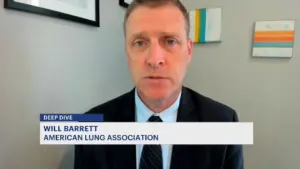More Stories

If you're using public transit, there are some health tips you should keep in mind.
The Centers for Disease Control and Prevention has tips for minimizing everyday risks of getting and spreading COVID-19.
The tips below can help protect you and your family when using transportation:
1. Do not travel if...
- You are sick.
- You tested positive for COVID-19 and haven’t ended isolation.
- You had close contact with a person with COVID-19 and haven’t ended quarantine.
- You are waiting for results of a COVID-19 test.
2. Masks
Wear a well-fitted mask over your mouth and nose while you're inside a bus, train or airplane. Masks are also required while at indoor transportation hubs.
3. Wash your hands
Before you leave, and when you reach your destination, wash your hands with soap and water for at least 20 seconds or use hand sanitizer with at least 60% alcohol.
4. Don't touch your face
Don't touch your face, whether you are on or off public transit. The CDC recommends not touching your eyes, nose, or mouth.
5. Limit touching
Limit touching frequently touched surfaces such as kiosks, digital interfaces such as touchscreens and fingerprint scanners, ticket machines, turnstiles, handrails, restroom surfaces, elevator buttons, and benches as much as possible. If you must touch these surfaces, as soon as you can, wash your hands for 20 seconds with soap and water or rub your hands with sanitizer containing 60% alcohol.
6. Payments
Use touchless payment and no-touch trash cans and doors when available. Exchange cash or credit cards by placing them in a receipt tray or on the counter rather than by hand, if possible.
7. Hand sanitizer
Carry hand sanitizer and use it the moment you exit the bus, train, or subway.
8. Practice social distancing
During travel, try to keep at least 6 feet (2 meters) from people who are not in your household — for example, when you are waiting at a bus station or selecting seats on a train.
More from News 12
0:26

Want to support women-owned businesses? 5 ways to help you find shops during Women’s History Month
4:03

DEEP DIVE: Marking the 60th anniversary of Martin Luther King Jr.'s 'I Have a Dream' speech
1:09

Deep Dive: FDA approves antibody to protect newborns from RSV
4:02

Deep Dive: Retired superintendent shares insight on career and challenges in schools
3:42

Deep Dive: Juneteenth commemorations planned across New Jersey
3:32
